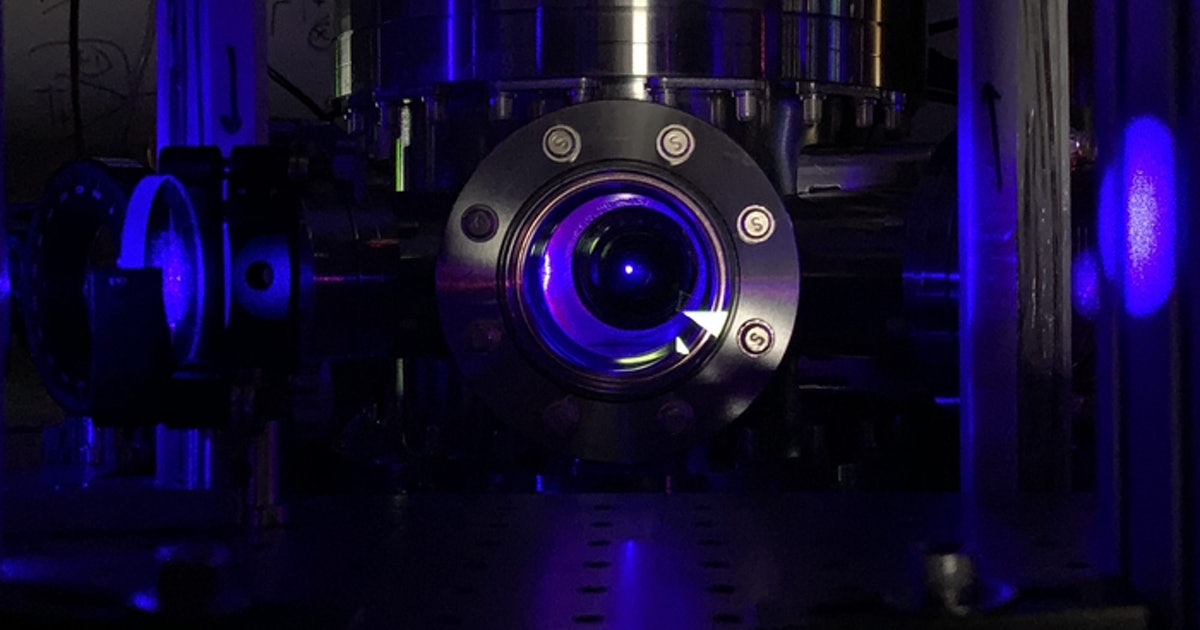
Physicists are finally ready to test a key Einstein theory
Earth’s gravity distorts spacetime. As far as we know, every point on Earth experiences time and space differently by a minuscule — but measurable — amount. Atomic clocks are one of the ways to detect that distortion. (In fact, that’s how GPS works.) Now two technological breakthroughs in next-generation atomic clocks are opening up new avenues for research into gravity and relativity at very small scales.
The studies were published back-to-back in Nature in early 2022. Both experiments use so-called “optical lattice clocks”, in which ultra-cooled strontium atoms floating in a vacuum are trapped in place by light and made to “tick” with a red laser. The laser then tells time by counting the ticks. These clocks keep time to an accuracy of a second in tens or even hundreds of billions of years, according to scientists.
On his 143rd birthday, Inverse celebrates the world’s most iconic physicist — and interrogates the myth of his genius. Welcome to Einstein Week.
Physicists from Jun Ye’s lab at JILA (a collaboration between NIST and the University of Colorado, Boulder) produced the most stable and precise optical lattice clock on record, precise enough to measure the difference in gravity at a separation of just 0.2 millimeters (200 microns) — far smaller than ever before.
“Relativity has been tested over and over. It’s been holding true.”
“We haven’t done it between independent clocks yet,” says Tobias Bothwell, the study’s lead author. “But this is the first piece showing that this level of precision is attainable.”
Separately, physicists in Shimon Kokowitz’s lab at the University of Wisconsin produced a series of independent optical lattice clocks that could be activated and measured together.
“Now we’re really limited by the atoms and not by the laser anymore,” explains Kolkowitz. This provides a path to stable, precise, and portable clocks that might one day be developed into gravitational wave and dark matter detectors.
The Einstein Connection
Einstein’s theories of general and special relativity still seem to hold true even at these very small distances, which are approaching the domain of quantum mechanics. But Einstein’s theories and quantum theory don’t play nicely together.
Relativity imagines the world and forces like gravity as smooth and continuous, while the fundamental tenet of quantum theory is that everything is quantized, that is, broken down into basic, discrete units. And that’s just the beginning of where they disagree. The problem for physicists is they both still seem to work.
“Relativity has been tested over and over. It’s been holding true. Quantum mechanics has been tested over and over and has been holding true. But we also know the two cannot be both true at the same time. At some scale, they have to break down,” explains Ye.
None of the researchers think this research can be used to detect a quantized version of gravity. but if they can investigate the effects of gravity on quantum systems, they might be able to see these two opposite kinds of physics interact.
Atomic clocks and quantum theory
“This a funny time for physics, because it’s actually very similar to the time before Einstein came on the scene,” says Kolowitz.
“We look out in the universe, and we see all these things that indicate that there’s stuff we don’t understand yet. But every measurement we do, every test we do, every experiment we do is well described by the physics that we know about. We just can’t put it all together.”
Currently, Kolowitz’s group is trying to use their clocks to show for the first time in a lab that relativistic effects can be observed in any system that’s accelerating, not just those influenced by gravity. This has been shown indirectly in the past but never proven experimentally on its own.
“I think that must be the spirit of Einstein.”
“We’re going to do the first direct test of this, and the first realization of this thought experiment that Einstein proposed 100 years ago,” says Kolkowitz.
“What is interesting and very exciting is we are starting to gain sensitivity to gravity at smaller and smaller scale,” says Bothwell of the future of their experiments.
“Now we’re at 200 microns, we think we can go to 20 microns. That’s not an impossible goal. That’s fairly soon.” At the moment, says Bothwell, that means engineering ways to put more atoms into the system.
Longterm, both groups want to use optical lattice clocks to probe deeper into unexplored areas of physics. Kolkolwitz is part of the Laser Interferometer Space Antenna (LISA) consortium, which aims to put atomic clocks in space as gravitational wave detectors. Ye’s group wants to push their experiment to a scale where the uncertainties of quantum physics bump up against the positional certainty of gravity. The hope is to find a regime where gravity plays a role in the way quantum systems behave.
“I’m not saying our experiment is going to be the judge,” says Ye. “But nevertheless, you have to keep exploring, So from that spirit, if nothing else, from that spirit of exploring deeper and deeper into nature, I think that must be the spirit of Einstein.”
On his 143rd birthday, Inverse celebrates the world’s most iconic physicist — and interrogates the myth of his genius. Welcome to Einstein Week.
Earth’s gravity distorts spacetime. As far as we know, every point on Earth experiences time and space differently by a minuscule — but measurable — amount. Atomic clocks are one of the ways to detect that distortion. (In fact, that’s how GPS works.) Now two technological breakthroughs in next-generation atomic clocks are opening up new…
Earth’s gravity distorts spacetime. As far as we know, every point on Earth experiences time and space differently by a minuscule — but measurable — amount. Atomic clocks are one of the ways to detect that distortion. (In fact, that’s how GPS works.) Now two technological breakthroughs in next-generation atomic clocks are opening up new…